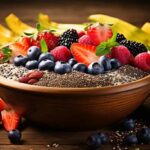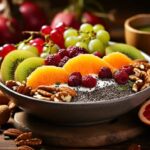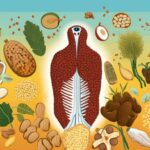Did you know that seeds provide a delicious and nutritious choice for individuals adhering to a gluten-free diet?
In fact, there are 11 reasons why incorporating seeds into your gluten-free meals can be beneficial for your health.
From providing essential nutrients like fiber and protein to supporting weight management and heart health, seeds such as chia seeds have a lot to offer.
Join us as we explore the many benefits of including seeds in your gluten-free recipes.
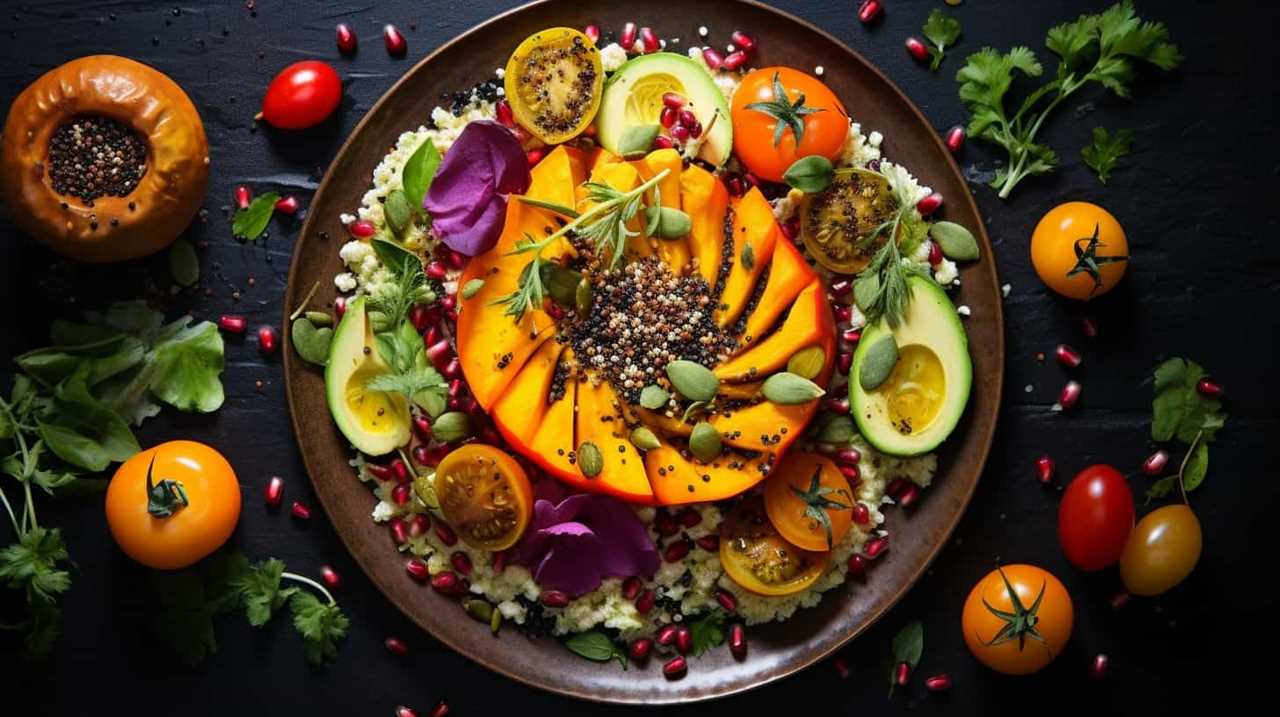
Key Takeaways
- Chia seeds are a valuable addition to a gluten-free diet, providing essential nutrients for brain and skin health.
- The high fiber content in chia seeds promotes digestive health, regulates blood sugar levels, and contributes to weight management.
- Chia seeds support gut health by promoting the growth of beneficial bacteria, enhancing nutrient absorption, and acting as a prebiotic.
- Chia seeds offer heart health benefits through their omega-3 fatty acids, antioxidants, and fiber content, reducing the risk of cardiovascular diseases.
Nutritional Benefits of Chia Seeds
One of the nutritional benefits of chia seeds is their high content of omega-3 fatty acids. Omega-3 fatty acids are essential fats that play a crucial role in brain health. They’re known to support cognitive function and can even improve memory and focus.
Incorporating chia seeds into your diet can provide a natural source of these beneficial fatty acids. Additionally, chia seeds are rich in antioxidants, which can help protect the skin from damage caused by free radicals. These antioxidants contribute to maintaining healthy skin and may even help slow down the aging process.
Including chia seeds in your daily meals can provide you with the necessary nutrients for both brain and skin health, making them a valuable addition to a gluten-free diet.
High Fiber Content in Chia Seeds
Chia seeds are known for their high fiber content, which offers a range of benefits for digestive health.

The soluble fiber in chia seeds absorbs water and forms a gel-like substance in the digestive system, promoting regular bowel movements and preventing constipation.
Additionally, the fiber in chia seeds can help regulate blood sugar levels, making them a suitable choice for individuals with diabetes or those looking to manage their blood sugar.
Lastly, the high fiber content in chia seeds can contribute to weight management by promoting feelings of fullness and reducing overall calorie intake.
Digestive Health Benefits
We frequently include chia seeds in our gluten-free diets because of their high fiber content, which provides numerous digestive health benefits. Here are four reasons why chia seeds are beneficial for our digestive system:

- Improved bowel regularity: Chia seeds are packed with soluble and insoluble fiber, which adds bulk to our stool and promotes regular bowel movements. This helps prevent constipation and keeps our digestive system functioning smoothly.
- Enhanced nutrient absorption: The high fiber content in chia seeds helps slow down the digestion process, allowing our body to absorb nutrients more effectively. This ensures that we get the maximum nutritional value from the foods we eat.
- Support for digestive enzymes: Chia seeds contain essential nutrients that support the production and function of digestive enzymes. These enzymes break down food particles and aid in the absorption of nutrients, making digestion more efficient.
- Nourishment for gut microbiome: The fiber in chia seeds acts as a prebiotic, stimulating the growth of beneficial bacteria in our gut. A healthy gut microbiome is essential for proper digestion and overall gut health.
Blood Sugar Regulation
After discussing the digestive health benefits of chia seeds, it’s important to delve into their ability to regulate blood sugar levels due to their high fiber content. Chia seeds are an excellent addition to a gluten-free diet because they provide a natural way to manage blood sugar levels.
The high fiber content in chia seeds slows down the digestion and absorption of carbohydrates, preventing spikes in blood sugar levels. This can be particularly beneficial for individuals with diabetes or those looking to manage their blood sugar levels. Incorporating chia seeds into gluten-free baking alternatives, such as using chia gel as an egg substitute, can provide the added benefit of blood sugar management.
Now that we’ve explored the role of chia seeds in blood sugar regulation, let’s move on to the next section, which discusses their potential for weight management support.
Weight Management Support
Moving on to weight management support, the high fiber content in chia seeds plays a crucial role in promoting a healthy body weight. Here are four reasons why chia seeds can aid in weight loss and satiety support:
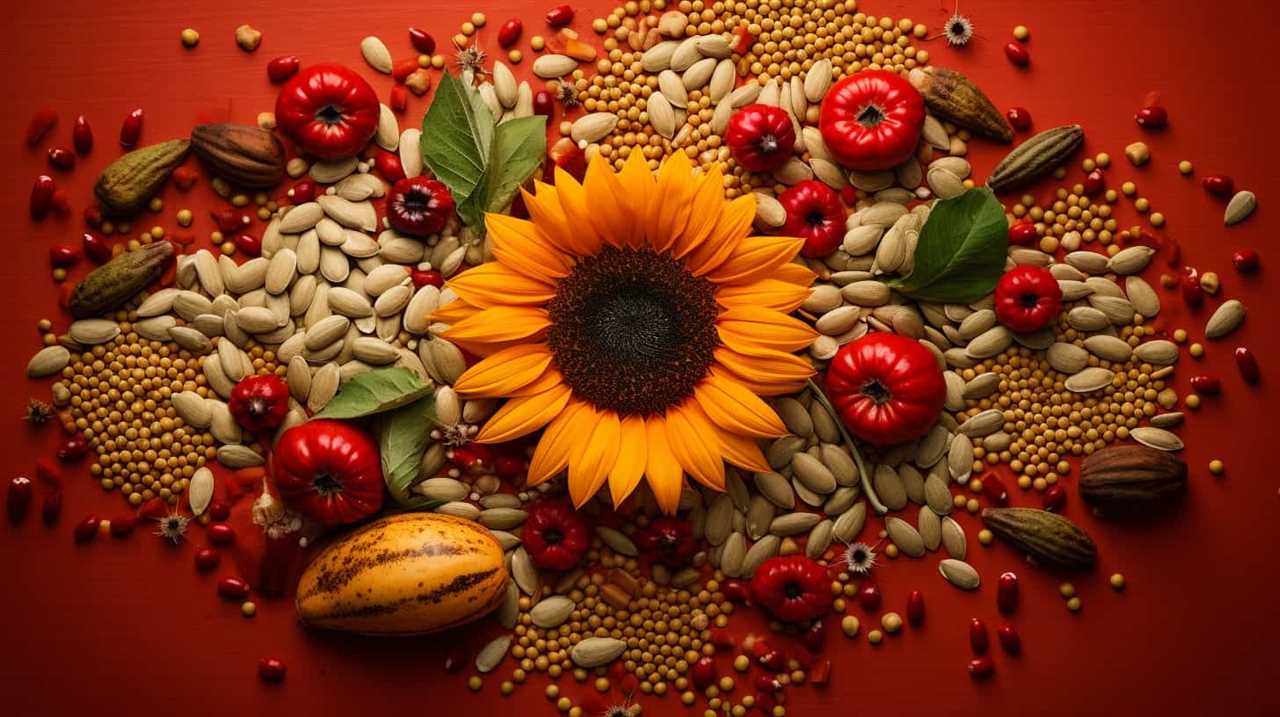
- Increased satiety: Chia seeds absorb liquid and form a gel-like substance in the stomach, which can help you feel fuller for longer. This can prevent overeating and unnecessary snacking.
- Reduced calorie intake: Chia seeds are low in calories but high in volume, making them a great addition to meals. By adding chia seeds to your diet, you can increase the volume of your food without significantly increasing your calorie intake.
- Slow digestion and blood sugar regulation: The high fiber content in chia seeds slows down the digestion process, preventing spikes in blood sugar levels. This can help regulate appetite and prevent cravings.
- Nutrient density: Chia seeds are packed with essential nutrients like omega-3 fatty acids, protein, and antioxidants. Incorporating nutrient-dense foods like chia seeds into your diet can support overall health while promoting weight management.
Chia Seeds as a Source of Protein
Chia seeds serve as an excellent source of protein for those following a gluten-free diet. Protein is an essential nutrient that plays a crucial role in muscle building and repair. Chia seeds are a plant-based source of protein, making them an ideal option for individuals who avoid animal products. Just one ounce of chia seeds provides approximately 4 grams of protein, which can contribute to meeting daily protein needs.
Additionally, chia seeds have the unique ability to absorb liquid and form a gel-like substance in the stomach, promoting feelings of satiety and helping to curb cravings. This can be particularly beneficial for individuals looking for weight management support while following a gluten-free diet.
As we move into the next section, we’ll explore another important component of chia seeds: omega-3 fatty acids.
Omega-3 Fatty Acids in Chia Seeds
We will now explore the benefits of omega-3 fatty acids found in chia seeds. Incorporating chia seeds into a gluten-free diet can be a valuable way to obtain these essential nutrients.
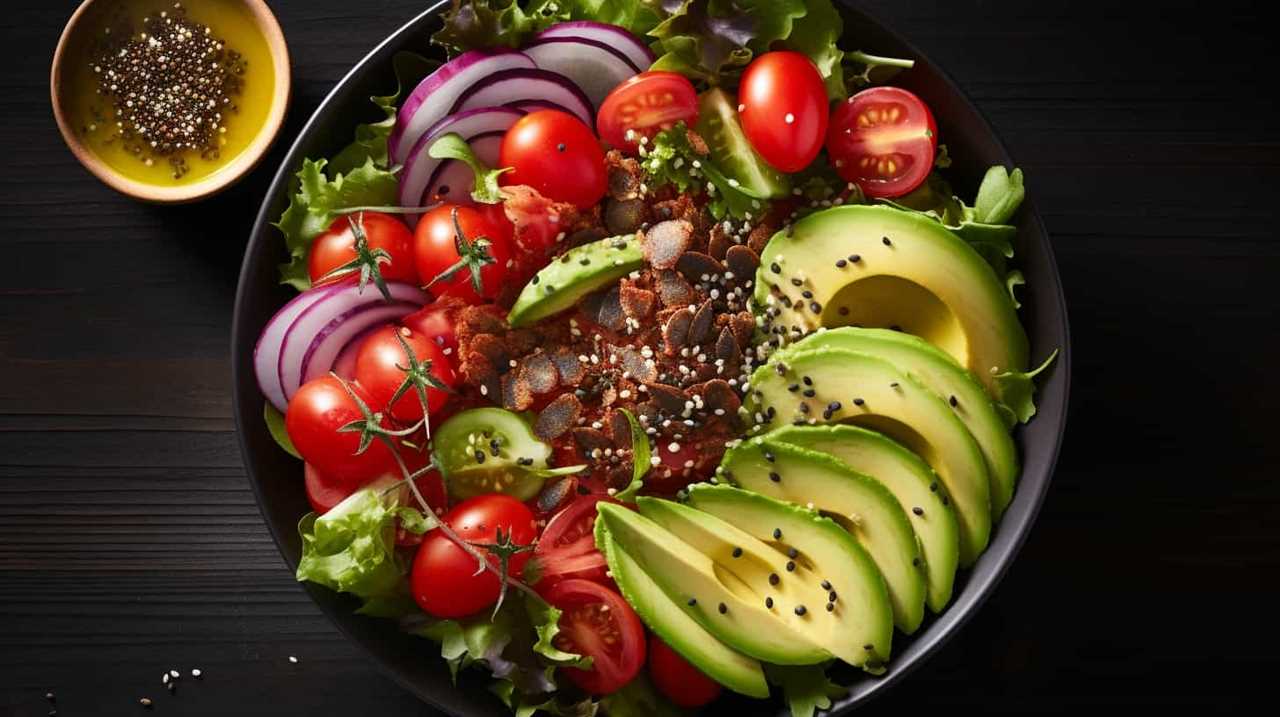
Here are four reasons why omega-3 fatty acids in chia seeds are important for a gluten-free diet:
- Heart health: Omega-3s have been shown to reduce the risk of heart disease by lowering blood pressure and triglyceride levels.
- Brain function: These fatty acids are crucial for brain development and function, supporting cognitive health and reducing the risk of cognitive decline.
- Inflammation reduction: Omega-3s possess anti-inflammatory properties, which can help manage chronic inflammation often associated with gluten intolerance.
- Skin health: Chia seeds’ omega-3 content contributes to maintaining healthy skin by supporting moisture retention and reducing inflammation.
Incorporating chia seeds into a gluten-free diet can provide these important benefits of omega-3 fatty acids, promoting overall health and well-being.
Chia Seeds for Weight Management
For effective weight management within a gluten-free diet, incorporating chia seeds offers numerous benefits. Chia seeds are a great addition to a weight loss plan due to their high fiber and protein content, which helps promote feelings of fullness and reduce cravings. They also have a low calorie count, making them a nutritious option for those watching their calorie intake. Additionally, chia seeds are known for their ability to absorb water and expand in the stomach, creating a gel-like substance that can slow down digestion and promote satiety. This can help prevent overeating and aid in weight management.
Chia seeds also provide an energy boost, making them a great choice for individuals looking to increase their physical activity levels as part of their weight loss journey. They are rich in omega-3 fatty acids, which have been linked to improved brain function, increased energy levels, and reduced inflammation. Moreover, chia seeds have been found to be beneficial for skin health. They are a good source of antioxidants, which can help protect the skin from damage caused by free radicals and promote a healthy complexion.
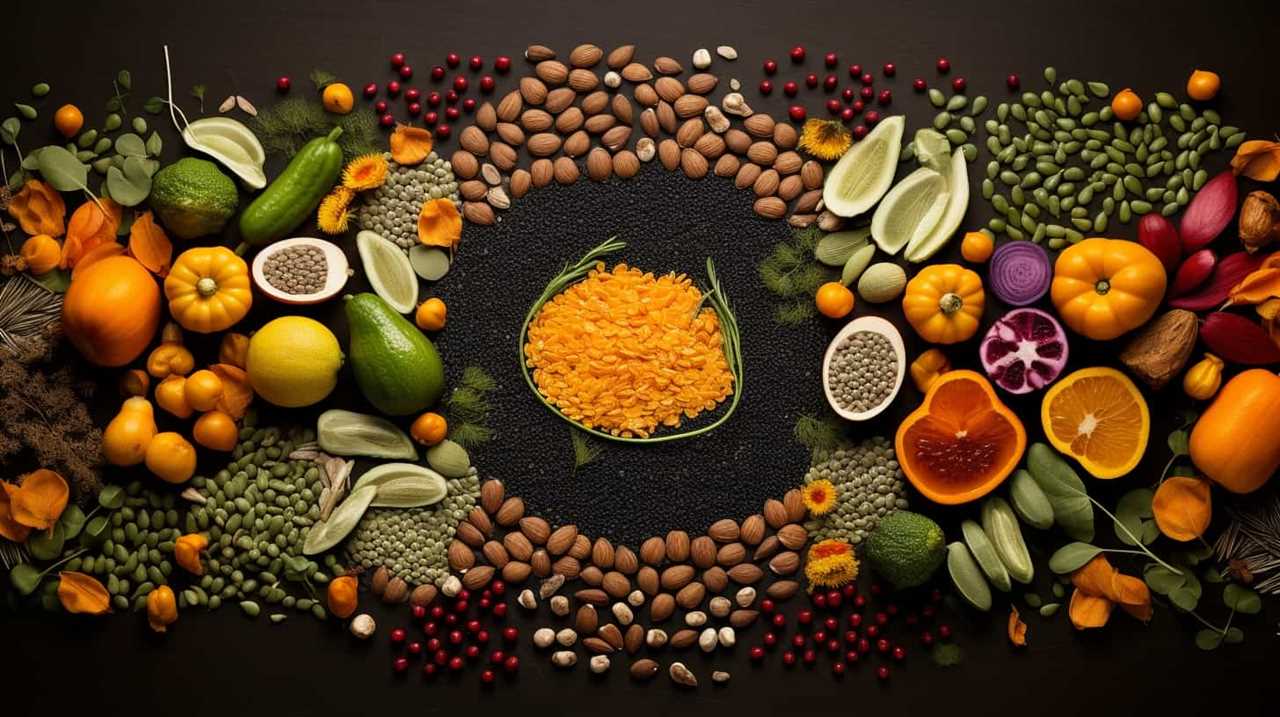
To give you a clearer picture, here is a table summarizing the benefits of chia seeds for weight management and overall health:
| Benefits of Chia Seeds | |
|---|---|
| High in fiber and protein | Promotes feelings of fullness and reduces cravings |
| Low in calories | Supports calorie control |
| Absorb water and create a gel-like substance | Slows down digestion and promotes satiety |
| Rich in omega-3 fatty acids | Provides an energy boost |
| Good source of antioxidants | Promotes skin health |
Chia Seeds and Digestive Health
When it comes to digestive health, chia seeds have shown potential benefits in reducing inflammation and promoting a healthy gut bacteria balance. Studies suggest that the omega-3 fatty acids found in chia seeds may help decrease inflammation in the digestive system, which can be beneficial for individuals with conditions like irritable bowel syndrome (IBS) or inflammatory bowel disease (IBD).
Additionally, chia seeds are a good source of fiber, which can support healthy digestion by promoting regular bowel movements and providing food for beneficial gut bacteria.
Chia Seeds and Inflammation
Chia seeds have been shown to alleviate digestive inflammation and promote overall digestive health. Here are four ways in which chia seeds can help with inflammation reduction and improve digestive health:
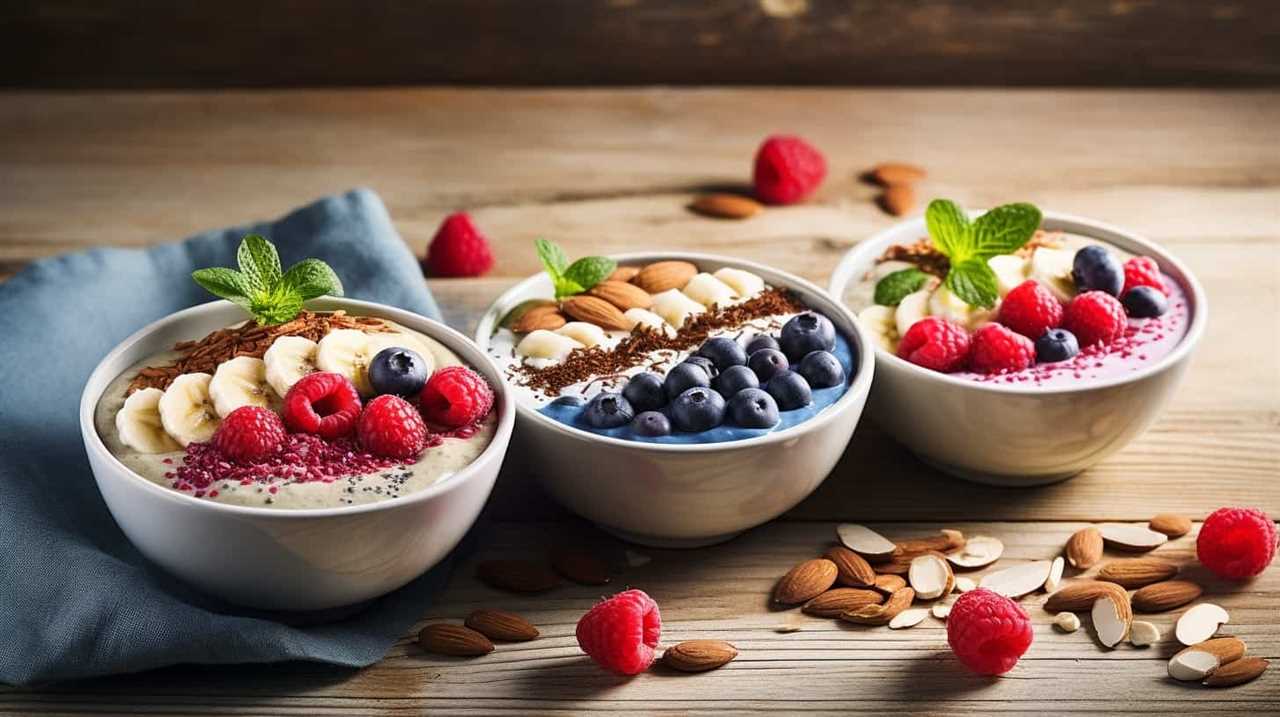
- Omega-3 fatty acids: Chia seeds are rich in omega-3 fatty acids, which have anti-inflammatory properties. These fatty acids can help reduce inflammation in the digestive system, easing symptoms such as bloating, gas, and discomfort.
- Fiber content: Chia seeds are an excellent source of dietary fiber. This fiber helps regulate bowel movements, preventing constipation and promoting a healthy digestive system. It also acts as a prebiotic, nourishing the beneficial bacteria in the gut.
- Antioxidants: Chia seeds are packed with antioxidants, which help combat inflammation and protect against cell damage. These antioxidants can help reduce inflammation in the digestive tract and support overall gut health.
- Gel-forming properties: When mixed with water, chia seeds form a gel-like substance. This gel can soothe the digestive system and help with conditions like acid reflux and gastritis.
Incorporating chia seeds into your diet through various chia seed recipes can be a simple and effective way to improve digestive health and reduce inflammation.
Chia Seeds and Gut Bacteria
We have found that incorporating chia seeds into our gluten-free diets has a positive impact on our gut bacteria and overall digestive health. Chia seeds are rich in fiber, which acts as a prebiotic, promoting the growth of beneficial gut bacteria. In fact, chia seeds contain a higher amount of fiber compared to many other seeds. This fiber helps to regulate bowel movements and prevent constipation, improving overall digestive function. Additionally, chia seeds have been found to enhance the diversity of gut bacteria, which is important for a healthy immune system. A balanced gut microbiome can help to protect against harmful pathogens and strengthen our immune response.
To illustrate the benefits of chia seeds for gut health, consider the following table:
| Chia Seeds and Gut Health | |||
|---|---|---|---|
| Increased fiber content supports healthy digestion | Promotes growth of beneficial gut bacteria | Regulates bowel movements | Enhances immune system function |
As we can see, chia seeds offer several advantages when it comes to gut health and overall digestive well-being. Now, let’s explore how chia seeds also serve as a powerful antioxidant.

Chia Seeds as an Antioxidant
Including seeds in our gluten-free diets has numerous benefits, and one noteworthy seed that stands out for its antioxidant properties is chia. Chia seeds are often hailed as a superfood due to their rich nutrient content. When it comes to antioxidants, chia seeds are a powerhouse.
Here are four reasons why chia seeds are excellent sources of antioxidants:
- High in phenolic compounds: Chia seeds contain a significant amount of phenolic compounds, which are known for their antioxidant activity. These compounds help protect our cells from damage caused by harmful free radicals.
- Rich in flavonoids: Flavonoids are a type of antioxidant that can help reduce inflammation and lower the risk of chronic diseases. Chia seeds are packed with flavonoids, making them an excellent addition to a gluten-free diet.
- Abundant in vitamin E: Vitamin E is a potent antioxidant that plays a crucial role in protecting our cells from oxidative stress. Chia seeds are a great source of vitamin E, contributing to their antioxidant properties.
- Omega-3 fatty acids: Chia seeds are one of the best plant-based sources of omega-3 fatty acids. These essential fats have been shown to have antioxidant effects and support brain health.
Chia Seeds and Blood Sugar Control
Continuing the discussion from the previous subtopic, incorporating seeds into our gluten-free diets offers potential benefits for blood sugar control. Chia seeds, in particular, are a great addition to a diabetic-friendly diet due to their low glycemic index and high fiber content. They help slow down the absorption of glucose, preventing spikes in blood sugar levels.
Incorporating chia seeds into your meals is easy and delicious. Here are three simple chia seed recipes to help manage blood sugar levels:
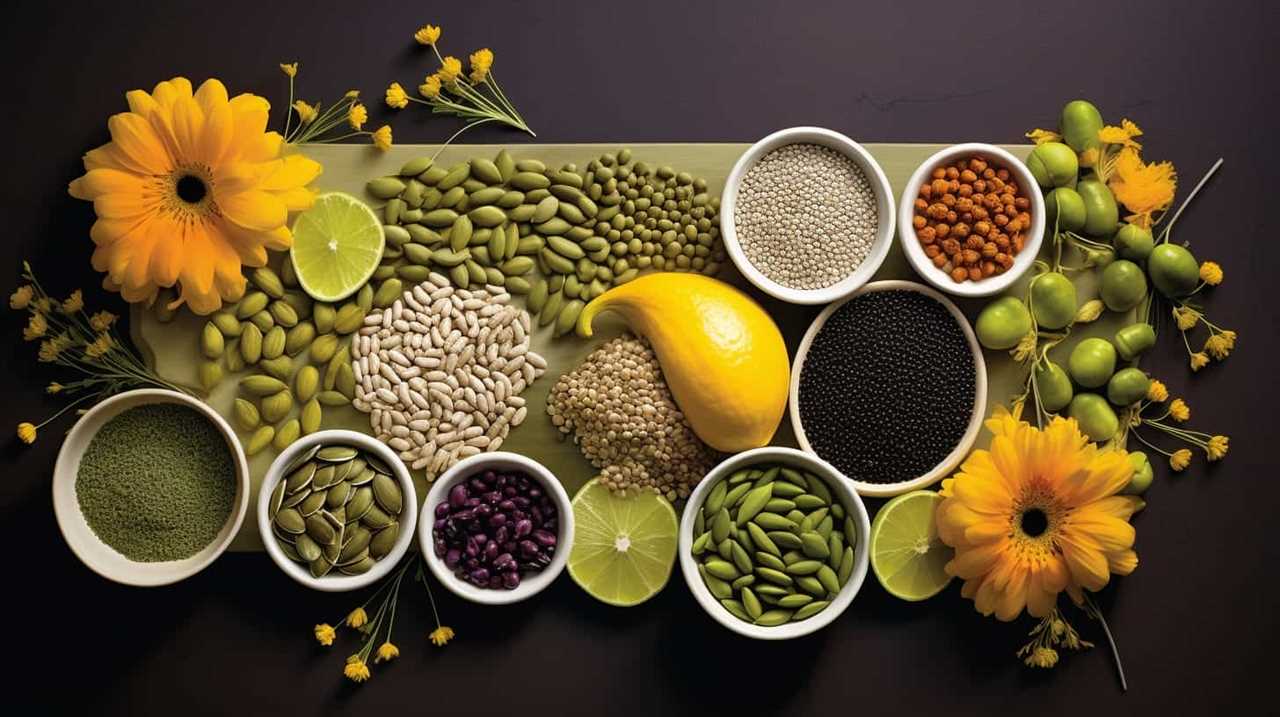
| Recipe | Ingredients |
|---|---|
| Chia Pudding | Chia seeds, almond milk, sweetener of choice |
| Chia Smoothie | Chia seeds, spinach, berries, almond milk |
| Chia Crackers | Chia seeds, flaxseeds, almond flour, herbs and spices |
By incorporating these recipes into your gluten-free diet, you can enjoy the benefits of blood sugar management while still enjoying tasty meals.
Transitioning to the next subtopic, let’s explore how chia seeds can contribute to heart health.
Chia Seeds for Heart Health
Chia seeds are a great addition to a gluten-free diet for promoting heart health. They’re rich in omega-3 fatty acids, which have been shown to reduce the risk of cardiovascular diseases.
Additionally, chia seeds are high in fiber, which can help lower cholesterol levels and improve overall heart function.
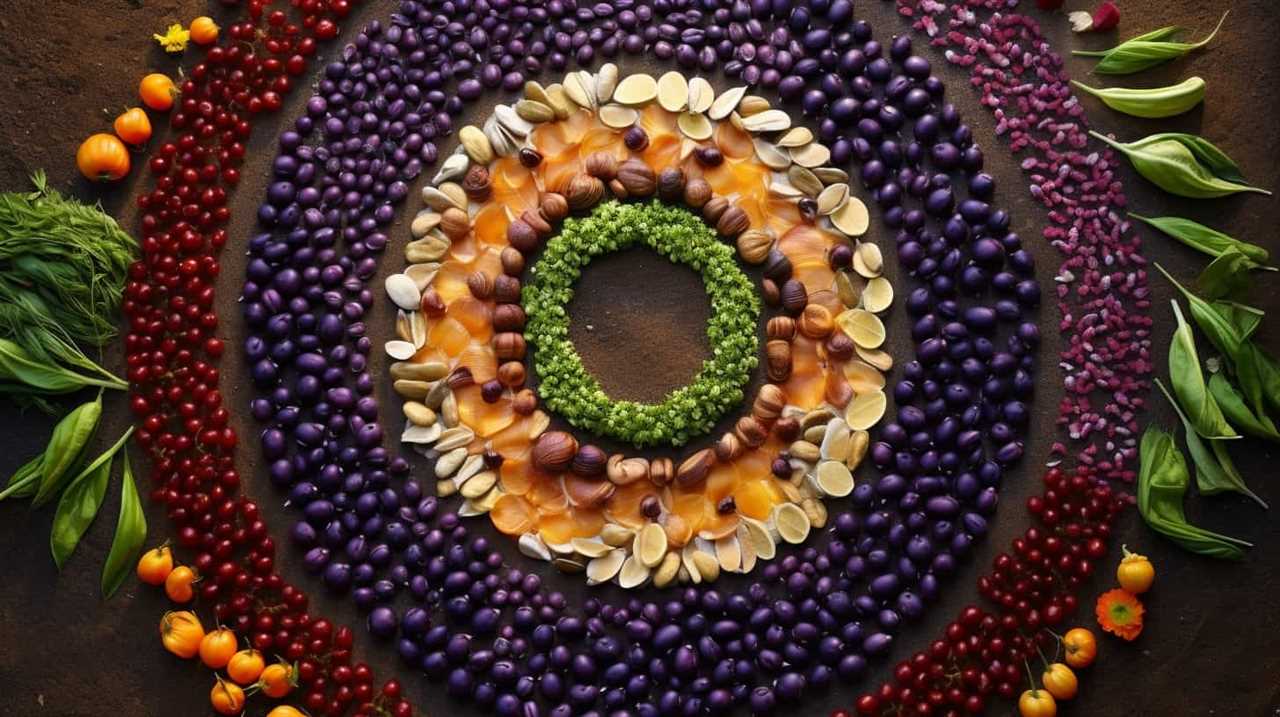
Lastly, chia seeds contain antioxidants, which can protect the heart from oxidative stress and inflammation.
Omega-3s for Cardiovascular Health
We can enhance our cardiovascular health by incorporating chia seeds into our gluten-free diet due to their high levels of omega-3 fatty acids. Omega-3s are essential for maintaining a healthy heart and reducing the risk of cardiovascular diseases. Here are four reasons why chia seeds are beneficial for our cardiovascular health:
- Omega-3s and Brain Health: Omega-3 fatty acids, such as those found in chia seeds, have been shown to support brain health and improve cognitive function. They help reduce inflammation in the brain and promote healthy brain cell communication.
- Omega-3s and Joint Health: Chia seeds are rich in omega-3s, which have anti-inflammatory properties. Incorporating chia seeds into our diet can help reduce joint pain and stiffness associated with conditions like arthritis.
- Lower Blood Pressure: Studies have shown that omega-3 fatty acids can help lower blood pressure levels, reducing the risk of hypertension and related cardiovascular problems.
- Decreased Triglyceride Levels: Chia seeds can help lower triglyceride levels, which are a type of fat that can increase the risk of heart disease.
In addition to their cardiovascular benefits, chia seeds are also known for their high fiber content.
High Fiber Content
Including seeds in a gluten-free diet can provide significant benefits for heart health due to their high fiber content. Fiber is an essential nutrient that helps regulate cholesterol levels and maintain a healthy heart. Chia seeds, in particular, are an excellent source of fiber, with just one ounce containing 11 grams.
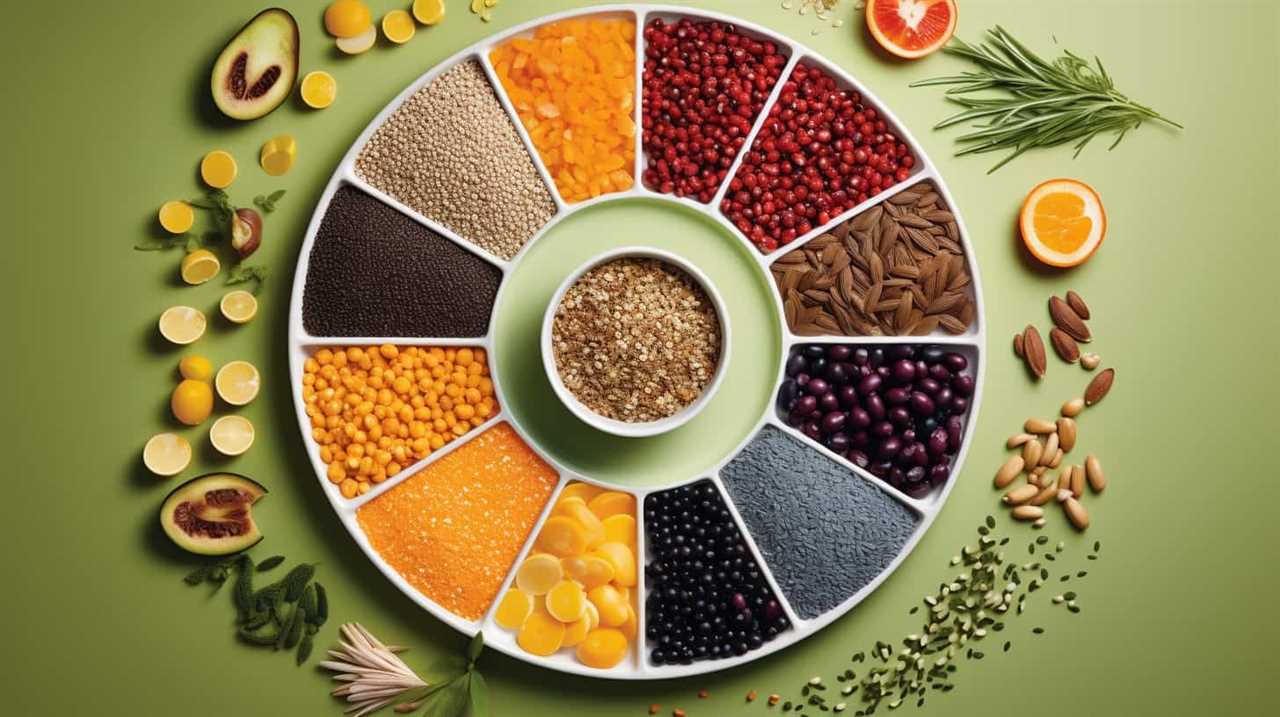
A high fiber diet has been linked to a reduced risk of heart disease and stroke. Consuming fiber-rich snacks, such as seeds, can help improve digestion, promote satiety, and control blood sugar levels.
Moreover, seeds can be used as gluten-free baking alternatives, adding texture and nutritional value to various recipes. By incorporating seeds into a gluten-free diet, individuals can enhance heart health and enjoy a wide range of delicious and healthy options.
Antioxidant Properties
One of the key benefits of incorporating seeds into our gluten-free diet is the significant antioxidant properties they provide, particularly chia seeds for heart health. Antioxidants play a crucial role in disease prevention by protecting our cells from damage caused by harmful molecules called free radicals.
Chia seeds, in particular, are rich in antioxidants such as flavonoids and phenolic compounds. These antioxidants help reduce inflammation, improve blood flow, and lower the risk of heart disease. Chia seeds also contain omega-3 fatty acids, which further support heart health.

Consuming chia seeds regularly can contribute to maintaining a healthy cardiovascular system and reducing the risk of heart-related issues.
Now, let’s explore how chia seeds can benefit our bone health.
Chia Seeds and Bone Health
Chia seeds support bone health by providing essential nutrients such as calcium and phosphorus. These tiny seeds are a great addition to a gluten-free diet, as they offer numerous benefits for bone density and calcium absorption.
Chia seeds contain a high amount of calcium, which is crucial for maintaining strong and healthy bones. In fact, just one ounce of chia seeds provides about 18% of the recommended daily intake of calcium.
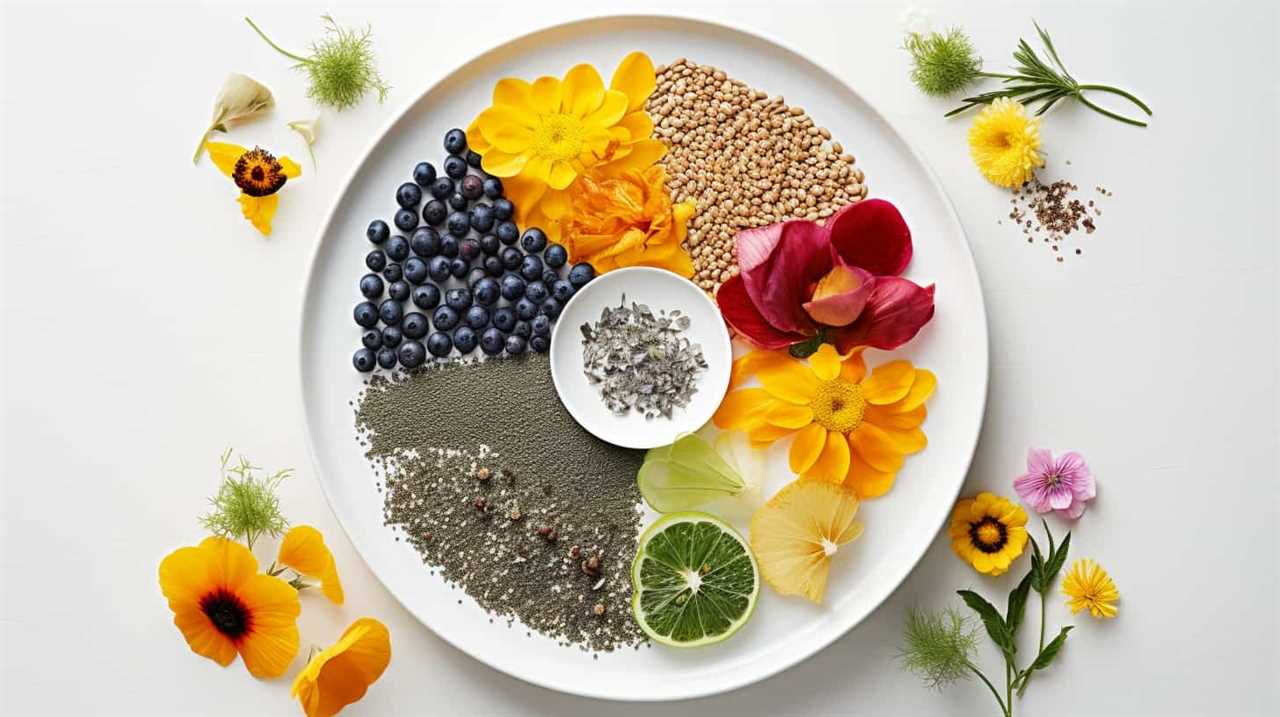
Additionally, chia seeds are rich in phosphorus, another important mineral for bone health. Phosphorus works alongside calcium to build and maintain strong bones and teeth.
Incorporating Chia Seeds Into Gluten-Free Recipes
To incorporate chia seeds into our gluten-free recipes, we can easily boost our intake of essential nutrients and support our overall bone health. Chia seeds are a versatile ingredient that can be added to a variety of dishes, including smoothies and baked goods.
Here are four ways to incorporate chia seeds into your gluten-free recipes:
- Chia seeds and smoothies: Add a tablespoon of chia seeds to your favorite smoothie recipe for an extra boost of fiber, protein, and omega-3 fatty acids.
- Chia seeds and baking: Replace eggs in gluten-free baking recipes by soaking 1 tablespoon of chia seeds in 3 tablespoons of water until it forms a gel-like consistency. This can act as a binder and add moisture to your baked goods.
- Chia seed puddings: Mix chia seeds with your favorite dairy-free milk and sweetener of choice, then let it sit in the fridge overnight. In the morning, you’ll have a delicious and nutritious pudding.
- Chia seed crackers: Combine chia seeds with other gluten-free flours and spices to make crispy and nutritious crackers.
Frequently Asked Questions
Can Chia Seeds Be Considered a Good Source of Vitamins and Minerals?
Chia seeds can indeed be considered a good source of vitamins and minerals. They have a high nutritional value, packed with essential nutrients like omega-3 fatty acids, fiber, protein, and antioxidants, which contribute to various health benefits.

How Much Fiber Is Found in Chia Seeds and How Does It Benefit the Body?
Chia seeds are an excellent source of fiber, with around 10 grams per ounce. This high fiber content can benefit the body by promoting gut health and aiding in blood sugar control.
Are Chia Seeds a Suitable Protein Alternative for Individuals Following a Gluten-Free Diet?
Chia seeds are a suitable protein alternative for those on a gluten-free diet. They are packed with protein and can provide essential amino acids. Other options include quinoa, lentils, and hemp seeds.
What Are the Specific Benefits of Omega-3 Fatty Acids Found in Chia Seeds?
The specific benefits of omega-3 fatty acids found in chia seeds include improved heart health, reduced inflammation, and enhanced brain function. Incorporating chia seeds into gluten-free recipes can provide overall health benefits.
Can Chia Seeds Aid in Weight Loss or Weight Management for Individuals on a Gluten-Free Diet?
Chia seeds can aid in weight loss or weight management for individuals on a gluten-free diet. They support digestion and provide sustained energy levels. Incorporating chia seeds into a balanced diet can be beneficial.
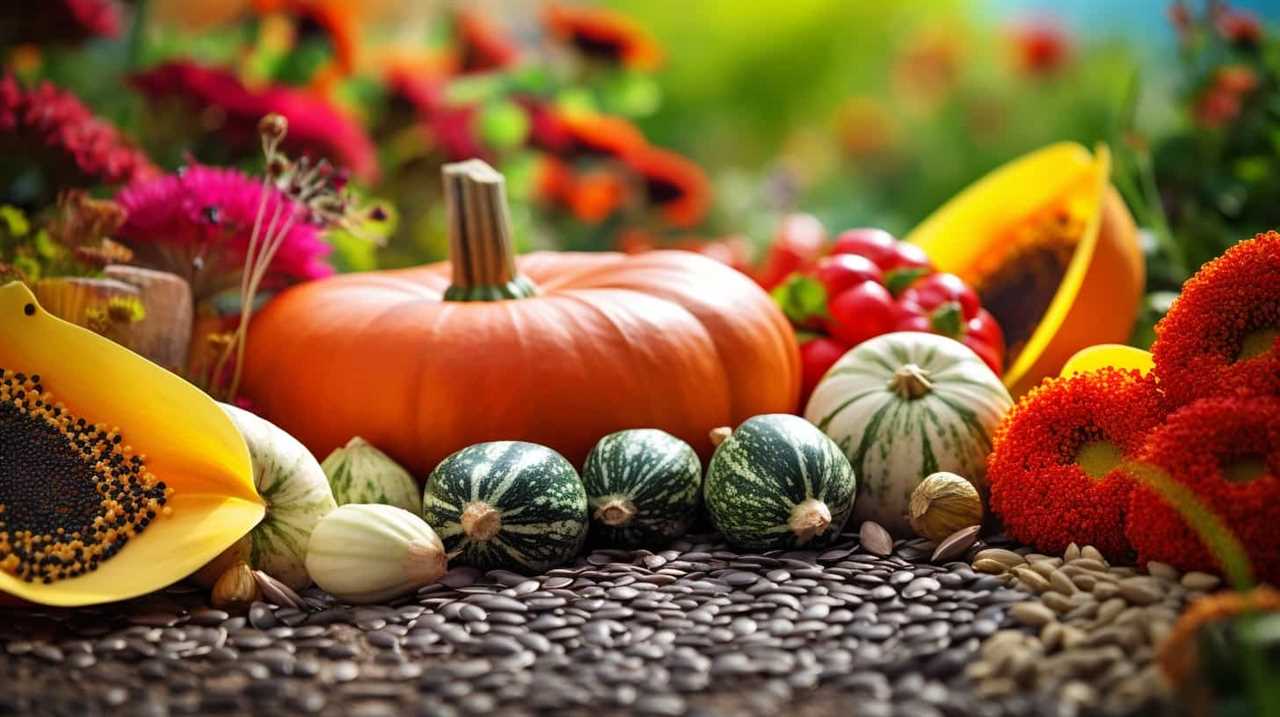
Conclusion
In conclusion, seeds such as chia can be a valuable addition to a gluten-free diet. Not only do they offer a wide range of nutritional benefits, but they can also be incorporated into various recipes to add flavor and texture.
Just like seeds nourish and support the growth of plants, including them in our diet can nourish and support our overall health. So, go ahead and sprinkle some chia seeds on your gluten-free meals and enjoy the delicious and nutritious benefits they bring.




